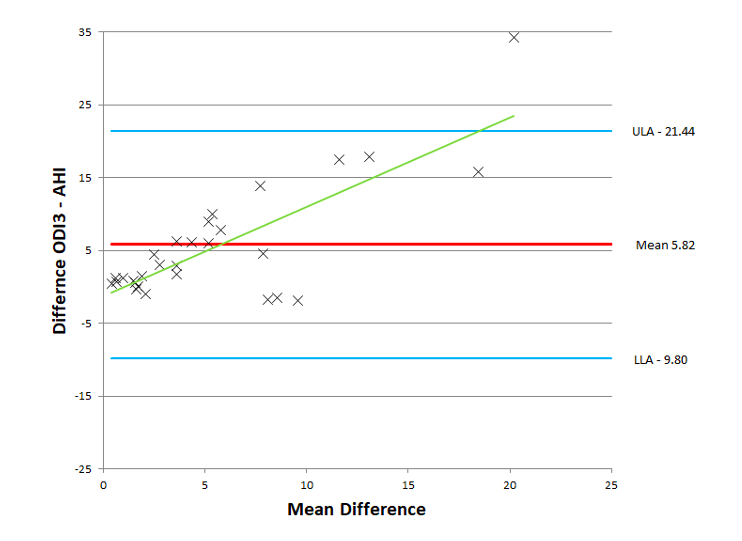Abstract
Background: CPAP software can generate an estimate Apnoea-Hypopnoea Index (AHI) whilst using the CPAP device. There are no specific studies that assess its applicability in paediatric clinical practice.
Aim: To compare the machine generated AHI to oximetry generated ODI (oxygen desaturation index) in paediatric patients.
Method: Thirty patients aged 4-17, established on CPAP therapy with >5hrs minimum compliance and used S10 (ResMed) devices were selected. Overnight oximetry studies were completed and analysed by a physiologist. Machine generated AHI was obtained from Airview (ResMed) data of the same night.
Results: Analysis of data showed a large variation between ODI3 and AHI (mean difference 5.82, limits of agreement ±15.62) (Figure 1). However, there was a significant correlation between ODI3 and AHI (Wilcoxon, r = -0.585, p <0.001).

Figure 1: Bland-Altman plot of ODI3 and machine generated AHI; including the limits of agreement, bias and regression line that ilustrates the relationship between ODI3 and AHI.
Conclusion: There was poor agreement between machine generated AHI and ODI3. Thus, suggesting limitations to the use of machine generated AHI in paediatrics. Nevertheless, correlation between machine generated AHI and ODI3 suggests machine generated AHI may be suitable for trend analysis.